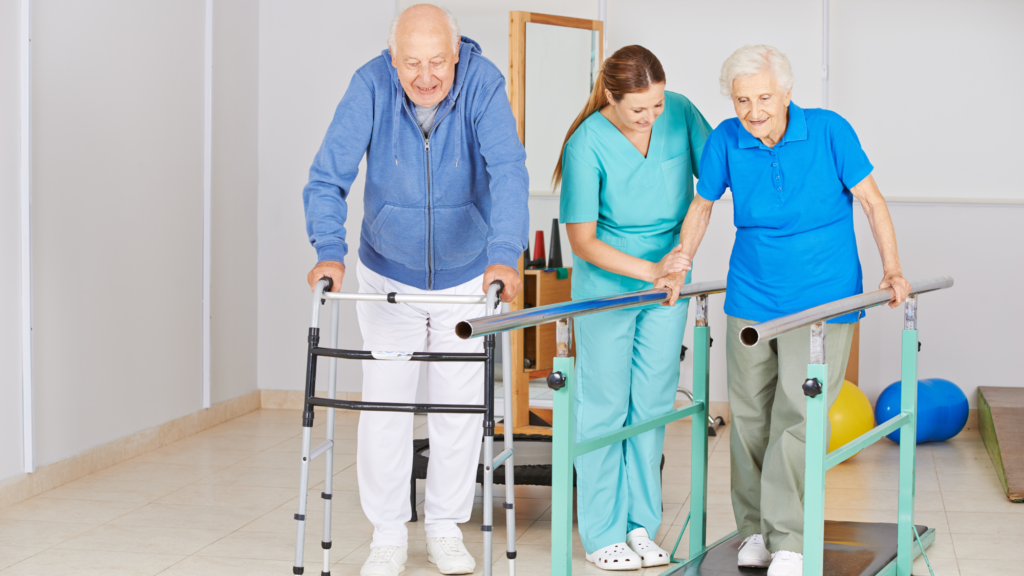Injuries can happen to anyone—athletes, office workers, or even during daily activities. The right therapy can speed up recovery, reduce pain, and prevent long-term complications. Here are some of the most common injuries and their treatments in physiotherapy.
1. Sprains and Strains
🔹 What Happens? Overstretching or tearing of ligaments (sprain) or muscles/tendons (strain).
🔹 Therapy:
- R.I.C.E. (Rest, Ice, Compression, Elevation) in the early stages
- Manual therapy to reduce stiffness and improve movement
- Strength and flexibility exercises to restore function
2. Fractures (Broken Bones)
🔹 What Happens? A break in the bone due to impact or stress.
🔹 Therapy:
- Immobilization (cast or brace) followed by gradual mobility exercises
- Weight-bearing training once the bone heals
- Strength training to rebuild muscle around the affected area
3. Tendonitis (Inflamed Tendon)
🔹 What Happens? Repetitive movements cause inflammation in tendons (e.g., Achilles tendonitis, tennis elbow).
🔹 Therapy:
- Rest and activity modification
- Stretching and strengthening exercises to reduce strain
- Ultrasound or electrotherapy for pain relief
4. Back and Neck Pain
🔹 What Happens? Poor posture, muscle strain, or disc problems cause discomfort.
🔹 Therapy:
- Postural training and ergonomic adjustments
- Core strengthening exercises
- Spinal mobilization or massage therapy
5. Knee Injuries (ACL Tears, Runner’s Knee, Meniscus Injuries)
🔹 What Happens? Damage to knee ligaments, cartilage, or overuse injuries.
🔹 Therapy:
- Balance and stability exercises
- Strength training for surrounding muscles
- Bracing and taping for support
6. Shoulder Injuries (Rotator Cuff Tears, Frozen Shoulder)
🔹 What Happens? Overuse, aging, or trauma leads to limited shoulder movement.
🔹 Therapy:
- Gentle stretching and mobility exercises
- Strengthening of shoulder stabilizers
- Joint mobilization techniques
7. Ankle Injuries (Sprains, Achilles Tendon Injuries)
🔹 What Happens? Rolling or twisting the ankle, leading to ligament or tendon damage.
🔹 Therapy:
- Range of motion and balance training
- Progressive weight-bearing exercises
- Taping or bracing for stability
8. Concussions (Mild Traumatic Brain Injury)
🔹 What Happens? A blow to the head affects brain function.
🔹 Therapy:
- Gradual return to physical activity
- Balance and coordination exercises
- Vision and vestibular therapy if dizziness occurs
9. Carpal Tunnel Syndrome
🔹 What Happens? Repetitive wrist movements compress the median nerve.
🔹 Therapy:
- Wrist splinting to reduce strain
- Stretching and nerve gliding exercises
- Ergonomic modifications for workstations
10. Sciatica (Nerve Pain in the Lower Back and Leg)
🔹 What Happens? Compression or irritation of the sciatic nerve.
🔹 Therapy:
- Core and lower back strengthening exercises
- Stretching to relieve nerve tension
- Manual therapy to improve spinal alignment
Final Thoughts
Physiotherapy plays a crucial role in treating injuries by promoting healing, reducing pain, and restoring movement. If you’re dealing with an injury, getting the right therapy can help you recover faster and prevent further damage. Always seek professional guidance for a customized treatment plan suited to your condition!


